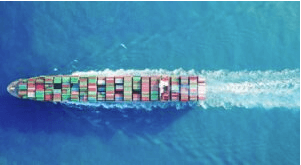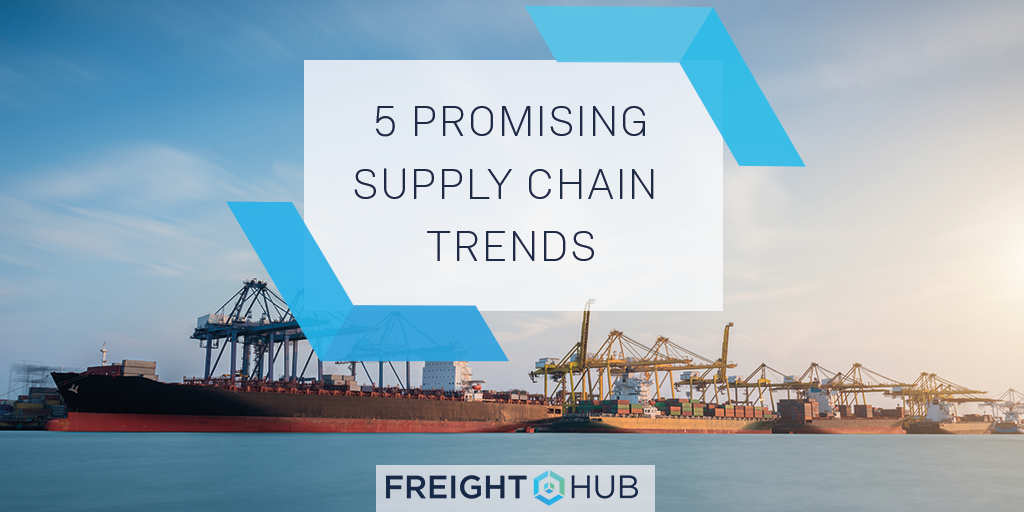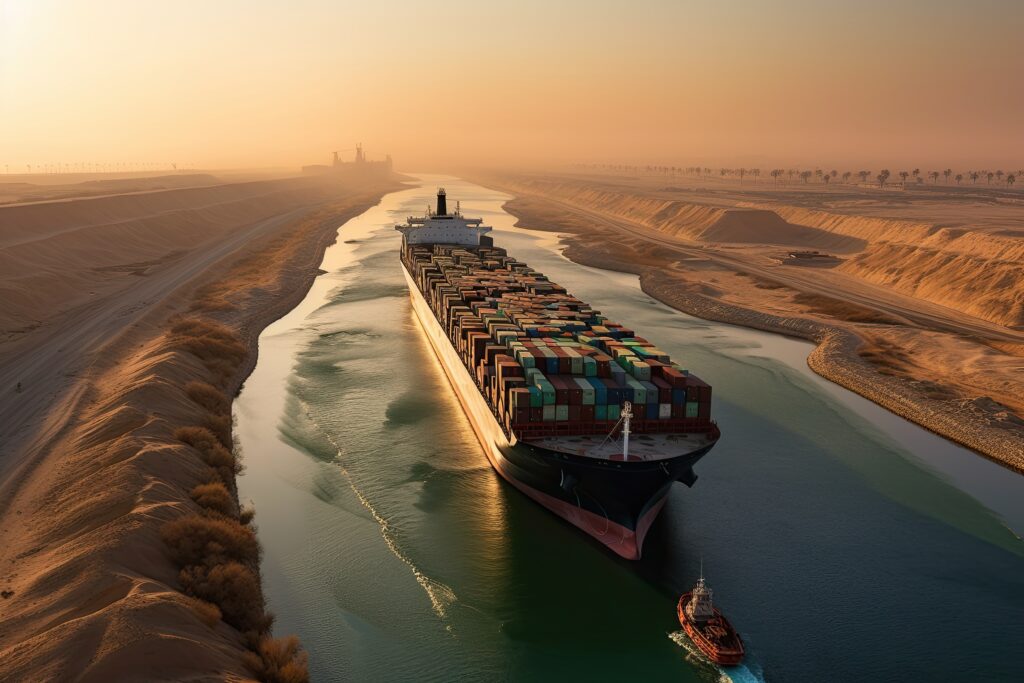As industry leaders in a competitive field, you are always looking for ways to save time, reduce costs, and optimize processes. In the first few months of 2018 alone, we’ve witnessed technology that was previously written off as science-fiction reach the final stages of development. Yes, the digital future of supply chain management is upon us, but it can be overwhelming to navigate through the vast information available about the many emerging technologies.
We’ve compiled the 5 Supply Chain trends to watch for in the next 5 years, and explained their potential to change supply change management as we know it.
1.) A.I. and algorithmic planning
Spreadsheet software like Microsoft Excel began to gain prevalence in the mid-1990s and early 2000s, simplifying the process of tracking and managing large amounts of data. This enabled us to observe trends and make business insights that were inconceivable prior to the software’s emergence. From this shift in logistics planning stemmed a new need for personnel that possessed both a deep understanding of data and statistics, and a familiarity of how to utilize the capabilities of the spreadsheet software.
You may associate A.I. with sci-fi, but the abilities of the technology are hardly obscure. A.I. software makes decisions in supply chain planning by anticipating potential disruptions before they occur and designing original solutions — similarly to a human’s way of problem-solving. Many tedious processes involved with manual data management have the potential to be handed off to A.I.-based software.
FreightHub spoke in depth with CEO and co-founder of Bulgarian optimization company Transmetrics, Asparuh Koev, back in November about A.I.’s role in the future of supply chain management. Companies like Transmetrics specialize in utilizing A.I. technology for business process optimization purposes, specifically data cleansing and enrichment, forecasting and execution controlling. Koev says if you’re one of the many experiencing anxiety about the technology’s enormous potential, you can put your mind at ease.
“There is this misguided belief that one day, computers are going to be smarter than people. That they are going to take many jobs from us and that they are going to start a war against people,” Koev says. “In actuality, computers cannot be people because they lack creativity, imagination, and they cannot think abstractly.”
We’ve already seen A.I. implemented successfully at the retail end of supply chains, with A.I.-designed custom experiences for e-commerce shoppers, but we will soon see the capabilities trickle into the transportation, distribution and manufacturing factions of the supply chain.
2.) Enhanced visibility
Leading logistics and forwarding companies are adopting technologies that provide visibility throughout the supply chain. Inventory tracking technology provides instant visibility of the progress of shipments at any point, and instant-quote capabilities allow forwarders to quote shippers on actual market rates much faster than it was previously possible.
With the increasing popularity of these services, the bar has been raised, setting a new industry standard that industry players have come to expect when shopping around for logistics services. FreightHub’s digital interface, for example, allows customers to view all of their shipments — past, present, and future — from one place, and shows the live GPS location of freight at any point through the supply chain.
FreightHub’s goal to meet this standard for transparency has been felt by clients. Felix Jonathan Mauerer, VP Service Experience & Operations at innovative mobility-as-a-service and autonomous driving company, Unu, agrees that, “transparency and predictability of time and costs, from supplier to end customer,” improved his company’s operations.
While the implementation of these new services initially allowed forwarders to differentiate themselves amongst their competitors, industry members are coming to expect services that provide visibility from manufacturing to retail. In the future, forwarding companies that intend to stay afloat will either adopt these new digital processes or face potentially losing appeal to current and potential clients.
3.) Blockchain encryption
The buzz around blockchain — in both the logistics and finance industries — has been growing since incidents of data-breaches began to occur on a frequent basis. Between 2016 and 2017, the rate of data breaches against U.S.-based businesses alone increased 76 percent, to 870 incidents, according to a study conducted by Statista. If that news wasn’t enough to rattle you, the research also shows that cyber attacks occur most frequently within the business community — outmatching healthcare, finance, education and government. As companies have digitized their processes, the visibility that is meant to be limited to partners within the supply chain, like the whereabouts and details of shipments, has become vulnerable to hackers.
In a climate of digital piracy, blockchain has become a buzzword ubiquitously scattered throughout the finance and logistics worlds, but its implications are more than just hype. Blockchain was initially popularized by the cryptocurrency, Bitcoin, because of its proven ability to prevent hackers from corrupting data or pirating digital assets. The concept can be visualized as a digital chain that links data records together, making all entries permanent and incorruptible. The continuous participation of third-party cryptographers ensures that the software is always ahead of the curve and that hackers are locked out.
Applying the same technology to industries outside of finance, like supply chain management, is a natural jump to make. Software development companies all over the world are perfecting their own applications of the open-source software for the use of logistics players.
Beyond the potential benefits to data security, managers would also be able to utilize blockchain to document the movement of products and make permanent transactional histories, which would greatly reduce costs, delays, and human error associated with manual transaction handling.
Read more: Digital Freight Forwarding Evolution: FreightHub Customers Can Pay with Bitcoin
4.) Robotic process automation
It wouldn’t be extravagant to say that recent advancements in robotics challenge the public understanding of reality versus science-fiction. Robotics companies like U.S.-based Tompkins International are releasing automated sorting systems that utilize drone technology, which are able to sort 36,000 units per hour, replacing the need for human pick-labor — at least for that aspect of operations. Lufthansa Technik, the MRO service provider affiliated with Lufthansa Airlines, also recently announced that it has been testing out similar technology, specifically using drones to conduct ground operation checks of aircraft at its Malta location.
Many of these drone-systems, like Tompkins International’s creations, are enabled with A.I. software. Algorithmic code lends the robots problem-solving skills similar to that of a human, which is how they are able to anticipate and address obstacles that inevitably occur in business operations. The robots are also able to collect data on individual items, like location and temperature, which is made available for operations managers to utilize as they see fit. With more companies integrating these technologies into their operations, we can expect robots and drones to become a more and more of a commonality in the logistics industry.
5.) IoT and the digitization of processes
The Internet of Things (IoT), which we explored in depth here, is a concept that ties together the scope of the digitization of the logistics industry. In essence, it encompasses the use of concepts like algorithmic planning, A.I., and blockchain technology in a worldwide network comprised of digital devices that communicate with each other.
Let’s give a brief example of a scenario in which IoT, or more specifically, the Internet of Cargo, is utilized. You are involved in the purchase and distribution of pharmaceuticals. Your forwarder has arranged for a shipment of the product to pass through Amsterdam en route to its final destination in China. The product will change hands at facility near Amsterdam Schiphol Airport before it continues its journey east. In the past, at this point in the supply chain, you may have had very limited data, or none at all, regarding the condition and location of your shipment. In digitizing your company’s processes by investmenting in high-tech, data-gathering containers, and implementing software that serves as a platform to access this data, your cargo is now a part of the network of IoT. The more companies implement smart-devices into their operations, the bigger the network becomes, and the better visibility is from company to company.
As we see more supply chains begin to resemble the above example, we will experience unprecedented boosts in efficiency, reduce operational costs, and witness an overall transformation in the industry climate. The specific timelines association with the implementation of each of these upcoming technologies is addressed in Capgemini Consulting’s Hype Cycle. The identification of changes, business impact, and estimated years to mainstream adoption in the Hype Cycle provide a wider view of the maturity level of the trends. According to Capgemini, the industry has passed the peak of “inflated expectations” and the resulting “trough of disillusionment” that tends to follow periods of hype and is now climbing toward the stage in which the technology is beginning to be utilized in the real world.


Source: Capgemini Consulting
Looking forward, we consider ourselves lucky to have front-row seats in watching the new wave of Information Age sweep over the world.








